When it comes to the Brazilian state of Rio Grande do Sul, the first word that comes to most Brazilians is “tradition”.
But although its capital, Porto Alege, still keeps many links with its roots, it also means having contact with a cosmopolitan side.
Filled with cultural programs, good food, and many outdoor activities, the ‘Gaúcho’ Capital has attractions that enchant its residents. Whether new or old.
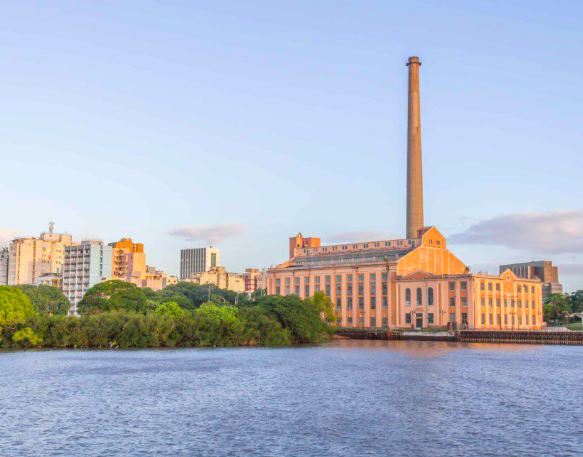
Here are some places every true gaúcho loves that you must see!
HISTORICAL CENTER
On the banks of the Guaíba River are some of the most visited attractions in Porto Alegre.
Both by tourists and locals. Get to know some of them:
Praça Marechal Deodoro
Also known as Praça da Matriz, it has important buildings, such as Palácio Piratini (headquarters of the state government) and the State Assembly, besides the Metropolitan Cathedral and São Pedro Theater.
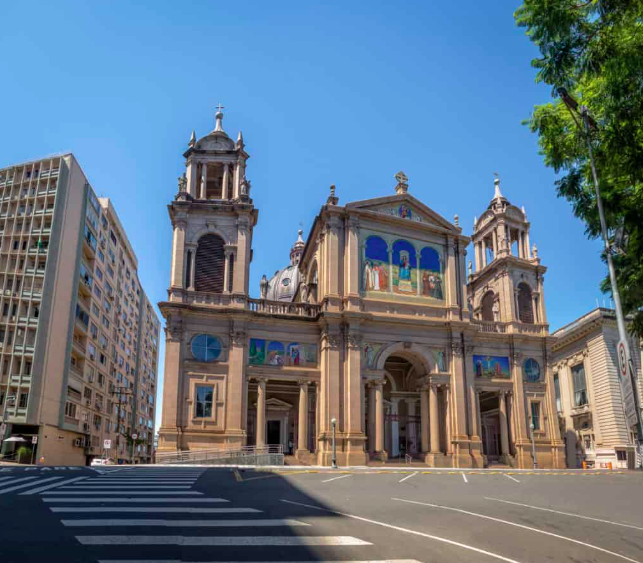
Alfândega Square
In its surroundings are located several important attractions.
The Museum of Arts of Rio Grande do Sul (MARGS) and the Rio Grande do Sul Memorial are among them.
The square is also home, since 1955, to the traditional Porto Alegre Book Fair, which takes place every year in the first half of November.
Public Market
Inaugurated in 1869, it is part of the city’s Historical and Cultural Heritage. It is one of the main commercial points of the Gaucho Capital.
The building has more than 100 establishments, including restaurants, snack bars, bakeries, fishmongers, and butchers.
Gasometer Plant
It is one of the most important and well-known cultural spaces in Porto Alegre.
It works in the old thermal power plant of Gasômetro, inaugurated on November 15, 1928.
It was opened to the population as a Cultural Center in 1991.
The 18,000 square meters of area house auditoriums, multipurpose rooms, amphitheaters, cinema, theater, and exhibition spaces.
Mario Quintana House of Culture
The former Majestic Hotel is located in a building also designed by Theo Wiederspahn.
He also designed the MARGS, and the Memorial of Rio Grande do Sul and is one of the main architects responsible for the architecture of the Historic Center.
In the early 1980s, the state government acquired the building, transforming it into a Cultural Center.
One of the greatest Brazilian poets, Mario Quintana, lived in the hotel from 1968 to 1980, in apartment 217, which is why he gives the place its name.
GUAÍBA WATERFRONT
Besides the Historical Center, the Guaíba waterfront has many other attractions.
By the way, did you know that for decades the Guaíba was considered a river by the gaúchos? Officially, however, the city hall considers it a lake.
If you are going to live in Porto Alegre, this is a great discussion to have with the gaúchos!
Here are some tips about the waterfront:
Iberê Camargo Foundation
It was created in 1995 to preserve, investigate, and promote Iberê Camargo’s work.
The current headquarters of the Foundation, inaugurated in May 2008, was designed by Portuguese architect Álvaro Siza.
Sunset
Brazil has several famous places to contemplate the sunset. And one of them is the Guaíba riverfront.
From the Historical Center to the Iberê Camargo Foundation, there are several places to enjoy the late afternoon.
One is the Anfiteatro Pôr do Sol (Sunset Theater), a place for free open-air shows and events in the city.
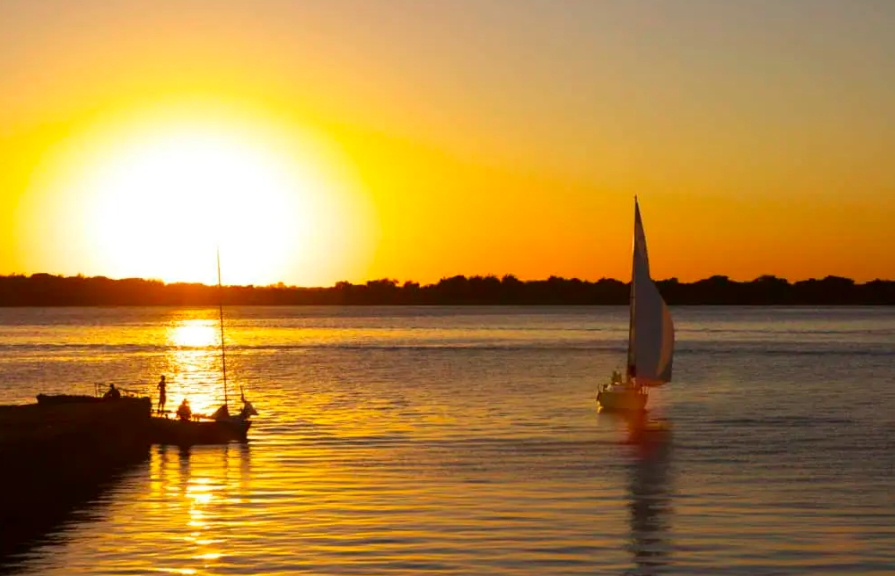
Sailing on the Guaíba
Since 1978, the Cisne Branco vessel has offered trips on the waters of the Guaíba.
The tour lasts about an hour and goes around the main islands of the lake, telling a little of Porto Alegre’s history.
Departures occur from Saturday to Sunday, at 10:30 am and 3 pm, and the ticket costs R$45.
On Fridays, Saturdays, and Sundays, the boat offers a happy hour, for R$50, at the following times: 4:30 pm (May to September), 5 pm (October), 6 pm (November to March), and 5 pm (April).
Place of Embarkation: Cais do Porto, Armazém B3 (Av. Mauá, 1050).
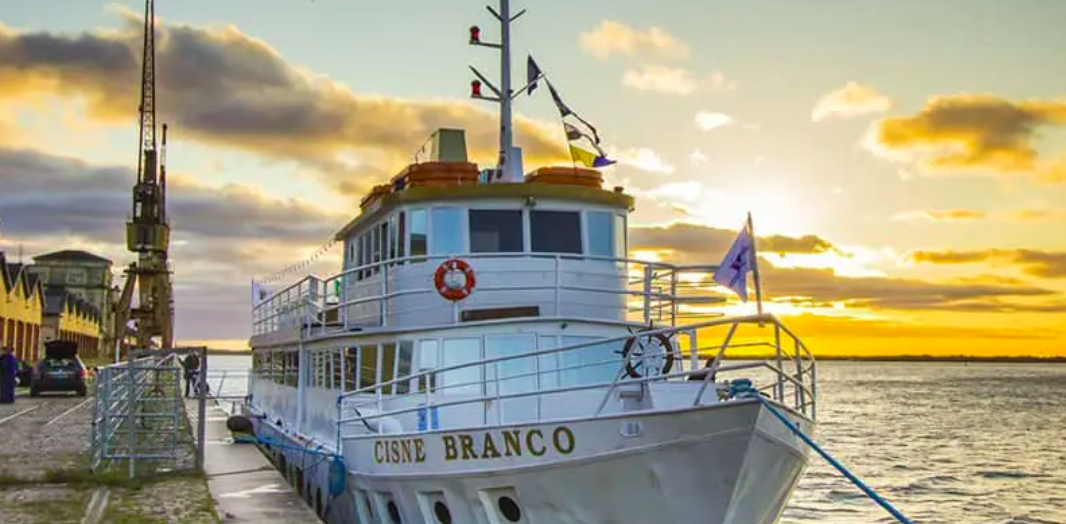
PARKS IN PORTO ALEGRE
Living in Porto Alegre also means having access to many places full of green areas for those who like an outdoor programs, such as the city parks, for example.
Get to know some of the main ones:
Farroupilha Park
Called Redenção by the locals, the Farroupilha Park is located in the Bom Fim neighborhood in the city’s central region.
It is extremely wooded and draws attention to its beauty.
On weekends, locals spread their yokes on the grass to drink ‘mate’ and enjoy life in the open air.
Ecological Fair of Bom Fim
Every Saturday since 1991, the avenue José Bonifácio receives this fair, which is 100% focused on organic products.
It takes place from 7 am to 1 pm.
It brings together families of family farmers organized in cooperatives and associations from Porto Alegre, the metropolitan region, and the Rio Grande do Sul mountain range, among other places in the state.
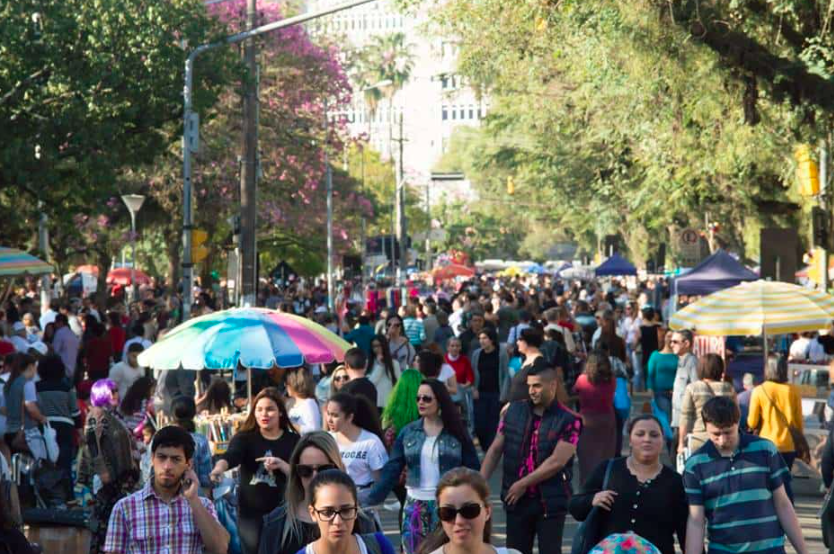
Redemption’s Brique
It is a weekly open-air fair that takes place every Sunday in the central area of Avenida José Bonifácio, which borders Farroupilha Park.
About 300 exhibitors are distributed in four sectors: handicrafts, plastic artists, antique shops, and food stalls.
The fair has been held since 1978. In 2005 it was considered a Cultural Heritage of the State.
Other parks in Porto Alegre:
- Parque Urbano da Orla do Lago Guaíba (Orla Moacyr Scliar)
- Parque Marinha do Brasil
- Parque Gabriel Knijnik
- Parque Moinhos de Vento (Parcão)
- Parque Germânia
- Jardim Botânico de Porto Alegre
PORTO ALEGRE BEACHES
Porto Alegre is not a coastal city.
But even without the view of the Atlantic Ocean, the people from the capital have the privilege of enjoying good beaches offered by the Guaíba Lake and, a little farther, by the Patos Lagoon.
These are the options:
NIGHTLIFE
Many of the best restaurants and bars in Porto Alegre are concentrated in two neighborhoods: Cidade Baixa and Moinho dos Ventos. See which one suits you best:
Cidade Baixa
It is the most traditional bohemian neighborhood of the Gaúcho Capital.
This is your place if you want a more alternative and cool night out. It has bars, nightclubs, and bars for all tastes, from samba to rock.
Moinhos de Ventos
One of the noblest neighborhoods in town. Stores, bars, pubs, and restaurants reinforce the refined atmosphere of the place, which is one of the most sought-after in Porto Alegre for a happy hour.
WEEKEND GETAWAY
Besides all the attractions it offers, one of the advantages of living in Porto Alegre is getting away for the weekend.
The Gaúcho Capital is about 120 km from two neighboring cities among Brazil’s main winter destinations: Gramado and Canela.
Another destination very close, also 120 km away, is Bento Gonçalves, considered the National Wine Capital.
Gramado
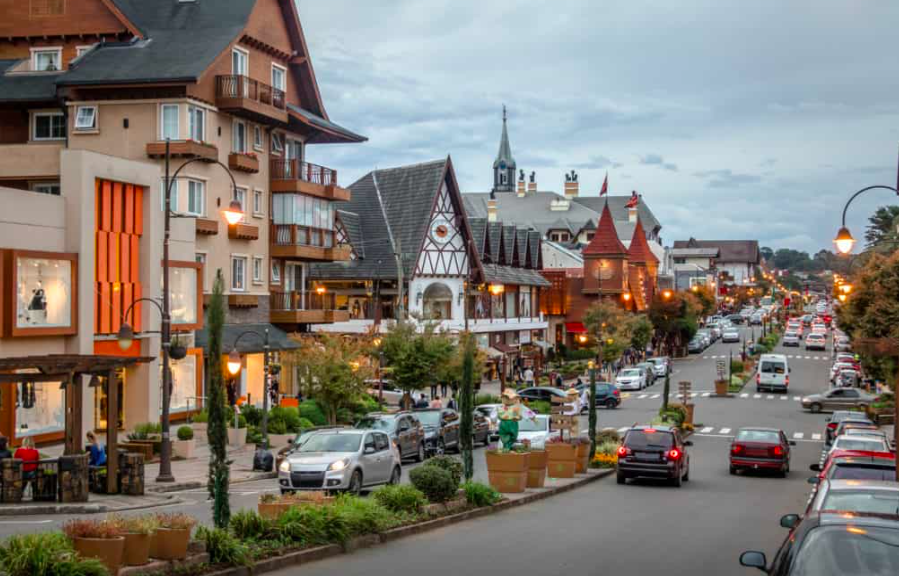
It is the favorite destination for tourists in Rio Grande do Sul.
German and Italian immigrants highly influenced both its architecture and gastronomy.
It has an excellent structure of hotels, inns, and restaurants.
And an annual agenda of events that move the city all the time. Among them is the Gramado Film Festival, one of the main ones in Brazil.
Canela
It is so close to Gramado – less than 10 km – that it is often difficult to know where one town ends and the other begins.
One of Canela’s main attractions pleases nature lovers: Caracol Park.
This is where the city’s biggest postcard is located, the Caracol Waterfall, a 131-meter-high waterfall.
You can observe it both from a belvedere and from its base. In this case, you must go up the Escadaria da Perna Bamba, with its 927 steps.
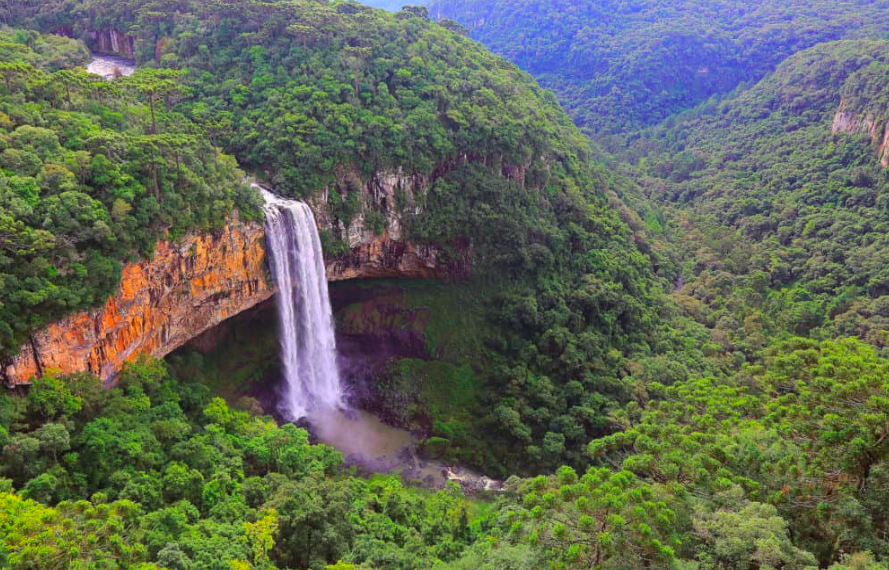
Bento Gonçalves
The city’s entrance portico is shaped like a wine barrel. Some of the main wineries in Brazil, such as Miolo and Casa Valduga.
Another one that stands out is the Cooperativa Vinícola Aurora, one of the largest in the industry.
All of them are open to visitation.
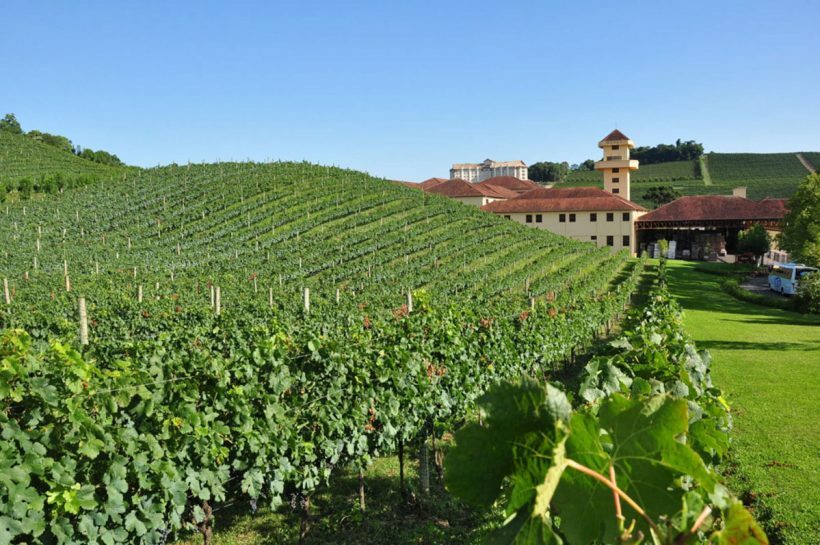
Under the total influence of Italian immigrants, the city is also a paradise of ‘cantinas’ for lovers of ‘Old Boot’ gastronomy.
With information form Quinto Andar

